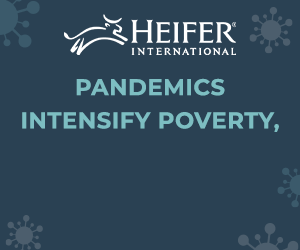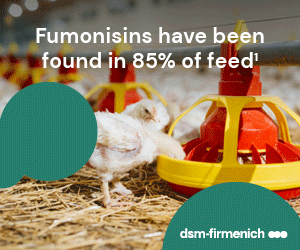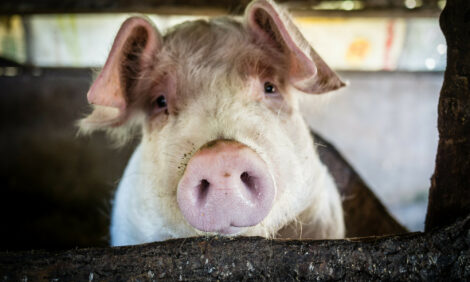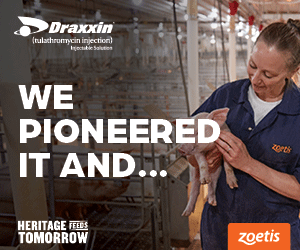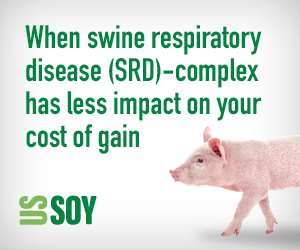



Chilean Pork Industry has Grown 800% in Last 30 Years
CHILE - Per capita pork consumption in Chile has tripled in the last 30 years, from 5 kg to 16 kg, making pork the third most popular meat after chicken and beef. In an interview with ElSitio Porcino editor, Nuria Martínez Herráez, Rodrigo Castañón of the Chilean Pork Producers' Association, ASPROCER, explains that this growth is largely down to the health status of the country's pigs, product safety and an increase in the selection of cuts now available.The Chilean pork industry has undergone many changes in recent years. ThePigSite was given the opportunity to interview Rodrigo Castañón, executive director of the Chilean Pork Producers' Association (ASPROCER) since 2012, and he explained the current situation and future forecast for the pork industry in his country to our readers.
In this interview for ThePigSite, he explains why the national pork industry has grown phenomenally in the past few years, and how it views the export market now that it is ranked sixth in the world for pork exports.
Q.The Pig Site: What role does pork play in Chile's diet? Has pork got a good reputation in the country and is domestic consumption likely to increase? Has ASPROCER conducted campaigns to increase pork consumption in Chile?
A. Rodrigo Castañón: Per capita consumption in Chile has tripled in the last 30 years, increasing from 5 kg to 16 kg, making pork the third most popular meat after chicken, at 32 kg per person, and beef at 23 kg. This growth is largely down to animal health, product safety, adjustments to pig genetics (making meat leaner), the improved selection of cuts on offer and, incidentally, an increase in the country's income per capita.
Publicity campaigns used to be aimed at the national market, but now the main focus is on exports, where the ChilePork brand stands out. The current campaign has been running for 10 years and its purpose is to place pork in China, South Korea and Japan. This initiative is supported by State funding through ProChile [part of the Ministry of Foreign Affairs which promotes exports].
Q.The Pig Site: What is the status of the pork sector in Chile in terms of production? How modern is the industry?
A. Rodrigo Castañón: We have managed to increase production by 800% in the last 30 years. This is largely due to the high health status achieved by collaboration with SAG [the state Agriculture and Livestock Service], significant investment by the industry itself and the huge boost that exports have provided.
The Chilean pork industry is characterized by vertically-integrated production companies and there is a high degree of modernization.
Q. The Pig Site: What position does Chile occupy in pork production globally? What does it currently export, and to which countries?
A. Rodrigo Castañón: Chile exports around 50% of its total pork production, equivalent to 460 million US dollars in 2015, making them the 6th biggest exporter worldwide for the 6th year running.
South Korea was the most valuable destination in 2015, making up 27%, followed by Japan (22%) and China (18%).
We are the third biggest source of pork for South Korea, which takes mainly bellies, and the fifth for Japan (mostly loins).
These results are largely down to Chile's commercial openness, which has allowed us to negotiate the 25 agreements which we currently have with the markets which constitute 86% of world GDP, and the country's renowned high health status has also had a major influence.
Q. The Pig Site: Who are ASPROCER's members and what is its role?
A. Rodrigo Castañón: ASPROCER is a trade association which has just celebrated its 30th birthday. Its members are pig producers of all sizes, from 100 to 135,000 sows, representing 94% of the pork produced in Chile.
Our work centres on leading and running initiatives that are of interest to the industry, such as animal health, food safety, sustainability and foreign trade.
It is precisely on the animal health and food safety front, which is a key factor in the industry's competitiveness, where ASPROCER and SAG have jointly led the process of implementing an 'Integrated Management System for Animal Health and Food Safety in the industry', which covers the entire production chain and includes more than 25 long-term programs, running simultaneously.
Q. The Pig Site: What are the Chilean pork sector's main difficulties? What challenges must still be overcome?
A. Rodrigo Castañón: Chile has significant export potential, achieved through great public and private effort. We now need to forge ahead with the necessary authority to push through projects which require Environmental Qualification Resolutions, develop new legislation to inspire confidence for investment and trading, and improve relationships with the communities where our activities are based.
We should also continue to make progress with projects which facilitate trade. The electronic animal health certification programme that we have developed in partnership with SAG is an example of such a project. It has allowed us to reduce clearance time in Chinese ports substantially and we have been operating it in China since 2014. Our aim is now to extend this system to new markets, such as Russia, the fourth biggest importer of Chilean pork, where we hope to have the system in operation by mid-2016.
Q. The Pig Site: Environmental management: how is slurry handled in Chile? Does its disposal pose problems?
A. Rodrigo Castañón: Above all, pig slurry is used as a crop fertilizer and soil improver, due to its nutrient value and organic conditioning effects.
All producers have a farm management plan to ensure sustainable slurry application, taking water and nitrogen balance into account.
Companies now make use of the latest technologies, such as activated sludge plants, vermicomposting and anaerobic digesters which are beneficial to the environment from the perspective of greenhouse gas emission and, in the case of the digesters, generate additional renewable energy from this novel source.
Q. The Pig Site: What are the main animal health challenges in Chile?
A. Rodrigo Castañón: Maintaining our status as a country free from the major diseases which can affect trade. This is one of the key factors in the growth of our sector and has allowed us to export over 50% of our production to more than 50 destinations.
We are currently in the process of eradicating PRRS from our country once again, with the help of SAG. This time we were hit by a new strain; one which was more aggressive on the ground than the strain we successfully eradicated in the first decade of this century. However, thanks to efforts by the public and private sectors, we have managed to contain the progress of this disease and reduce it to less than 5% of what it was.
Q. The Pig Site: What are the future prospects for the industry? Are they promising or poor?
A. Rodrigo Castañón: Despite the fact that we lack some advantages which other similar players have, such as a large domestic market (the population of Chile is less than 16 million people) or grain self-sufficiency (our pig production industry has to import 50% of its maize and 100% of its soya every year), we have managed to achieve an important position on the international stage through the efforts of state and industry.
The forecast continues to look very promising, especially for exports, but we must keep trying to increase the supply of value-added products, and continue to innovate and become more sustainable in order to maintain growth. Sustainability not only involves the adoption of new technologies and techniques which enable harmonious development within the community, but also requires a regulatory framework which addresses the issue of unpleasant smells and land management practices which take this factor into account.
The Pig Site's editorial team would like to thank Rodrigo Castañón and the Chilean Pork Producers' Association (ASPROCER) for granting us this interview.
Rodrigo Castañón: MBA from the University of Chile and Tulane University's A.B. Freeman School of Business (USA), degree in Civil Industrial Engineering (Universidad Técnica Federico Santa Maria) and degree in Food Engineering (Pontificia Universidad Católica de Valparaíso). He has 20 years' experience in the Chilean food industry, during which he has spearheaded many projects and campaigns on foreign trade, information technology, animal health, food safety and sustainability. He has occupied the post of executive director of ASPROCER since 2012.
To read this article in Spanish please go to: http://www.elsitioporcino.com/articles/2723/la-industria-porcina-chilena-aumenta-su-produccian-un-800-en-30-aaos/






